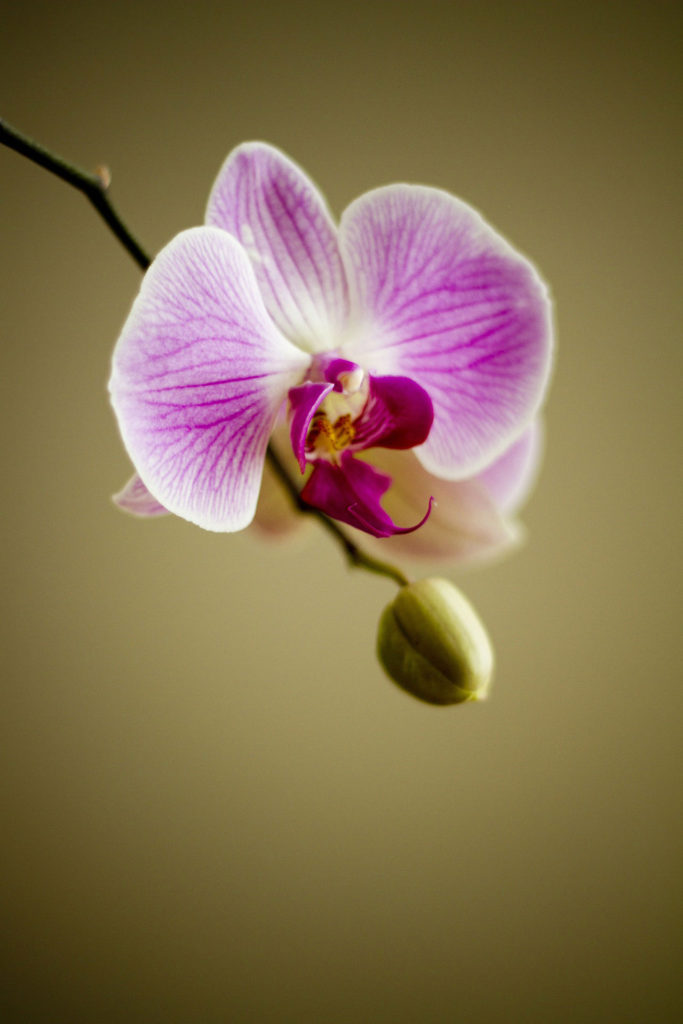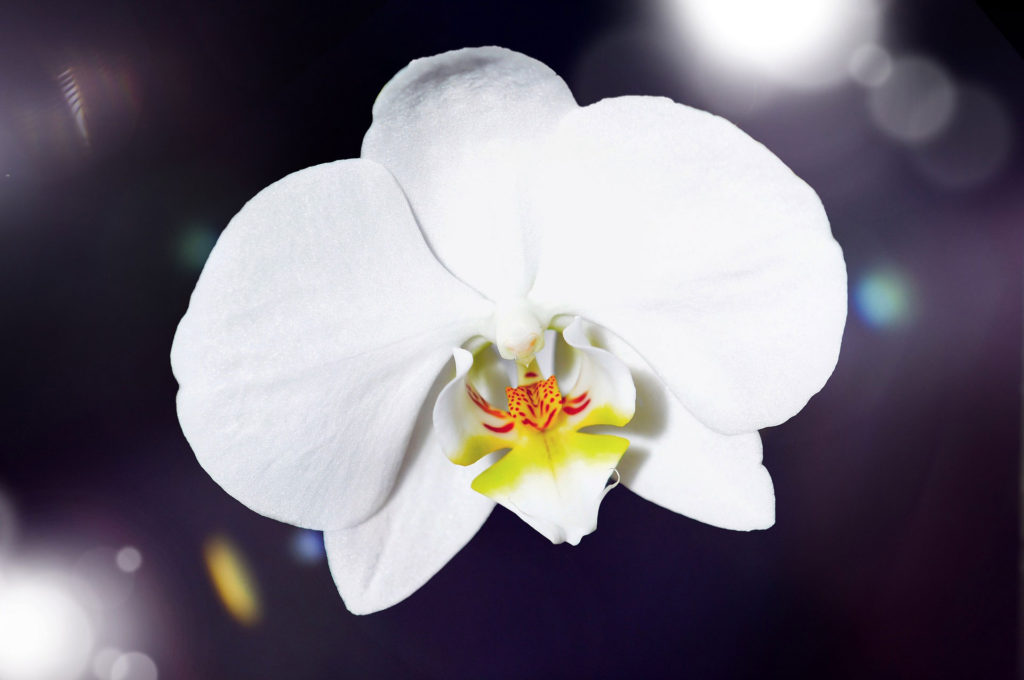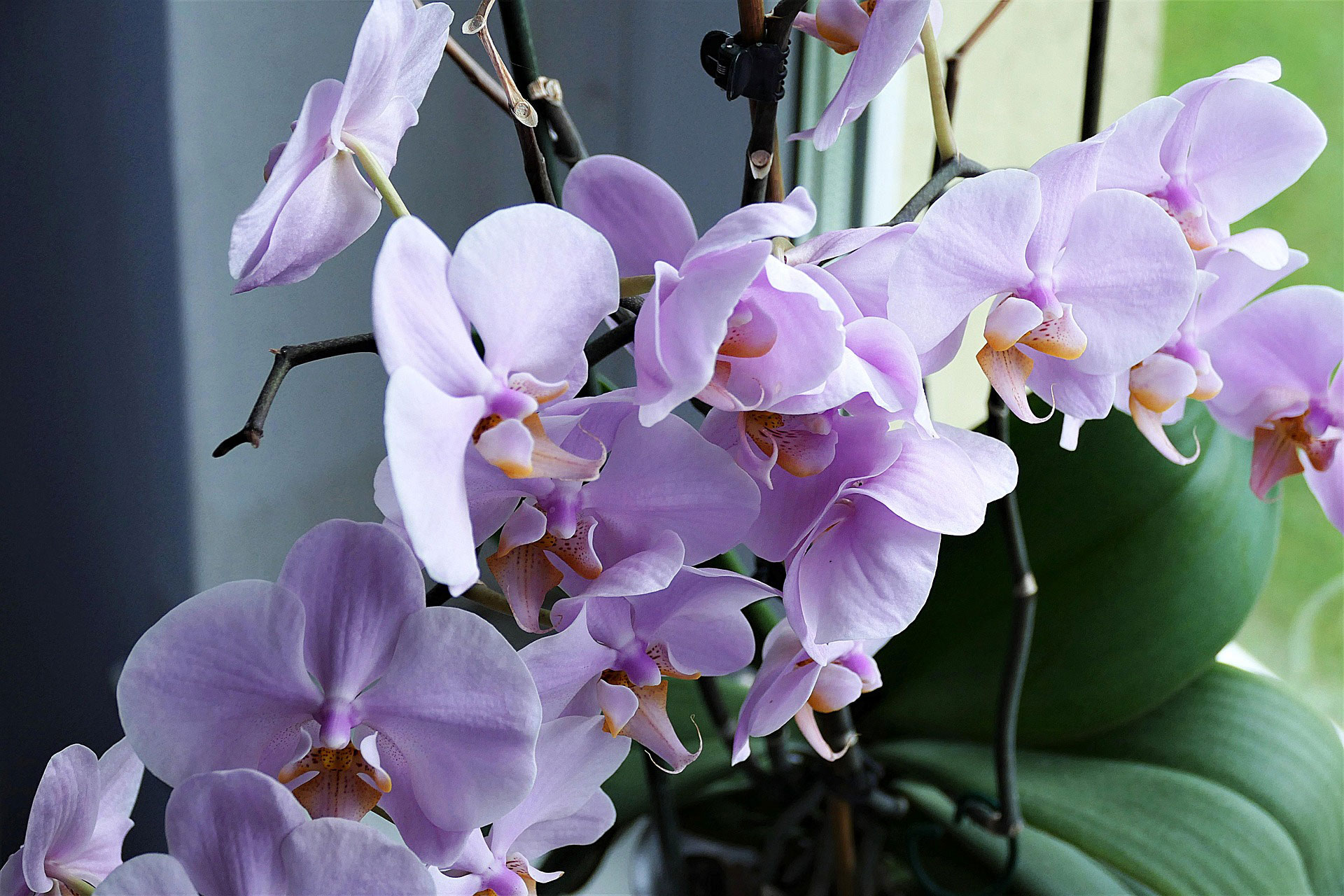Follow these simple guidelines and you’ll soon discover that potted orchids aren’t difficult to grow and will provide you with loads of flowers that last for weeks at a time.
RELATED TO GROWING ORCHIDS: How to repot orchids
ORCHIDS AS HOUSEPLANTS
- There are some types that prefer to grow in the garden or a greenhouse. It’s important to choose the right variety if you’d like it to thrive indoors.
- Most orchids can be placed in your living room while in flower. However, they should be placed back in the garden or greenhouse when they have finished flowering. Most varieties of moth orchid (Phalaenopsis), dancing lady (Oncidium types) or slipper orchid (Paphiopedilum) can be grown in the home throughout the year if given the correct conditions.
READ MORE: Tips for orchid care
- Moth orchids (Phalaenopsis including Doritaenopsis) have long-lasting flowers and come in a wide range of colours with the large white being the most popular. The almost round flowers are carried on tall gracefully arching stems. Phalaenopsis can be bought in flower at any time of the year as it has become quite easy for growers to manipulate the flowering time. In the home they will start flowering in late autumn or early winter as the cooler nights initiate the flowering period.
- Dancing lady orchids (Oncidium types including Odontoglossum) used to be available in bright yellow only. Modern-day hybrids are available in colours ranging from an almost pure white to shades of yellow, orange, red, pink and purple. There are also unusual colours like bronze and maroon. These beauties are called dancing ladies as the lip (the largest of the petals), looks like a ballgown with the other flowering parts resembling the head and arms of a lady on the dance floor. The flowers normally last for six weeks and the plants can flower twice a year with the added bonus that they are scented.
YOU MIGHT LIKE: 6 steps to make your home smell incredible
- Lady slippers (Paphiopedilums) come in shades of wine red and white or lime green and white. Soft yellows and pastel pinks are some of the newer colours. They also have very interestingly patterned leaves which add to their appeal. The flowers of plants in this group resemble a ballerina’s slipper, hence the common name and a single flower lasts for about six weeks. Some varieties produce flowers sequentially; one replacing the other after it has fallen from the plant. They will provide flowers for months on end.

CARING FOR ORCHIDS
- Most orchids are epiphytic (they grow on trees) and therefore require a free-draining growing medium. They prefer being in small pots as these dry out quicker. When buying an orchid, don’t transplant it into a larger container. Rather place the plant together with its pot into a larger decorative container. You can use moss or bark chips to cover the smaller pot. The plant can then be taken out to be watered and placed back in the container when the excess water has drained.
KEEP READING: Self-watering containers
- Light is important. Place your orchid in a position where it will receive bright light but no direct sunlight.
- Orchids prefer a humid growing environment. Place the pot on a saucer filled with sand or gravel and water to help raise the humidity. Make sure the pot on the gravel is not touching the water as continually wet roots are not beneficial to the plant. You can also use a spray bottle to spray the plant with water.
- Watering the plant will depend on the growing medium. Most orchids are grown in a bark mixture which can be watered every second or third day in summer and once a week in winter. When your plant is planted in moss, water it less often.
- You can water less regularly if you make sure the plant is well soaked. The easiest method is to place the pot in the hand basin or in a large pot with water up to the brim. Leave the pot to soak for at least 10–20 minutes and then allow the excess water to drain out. This will ensure the plant receives enough water.
- Feeding your orchid is essential. A stronger plant producing more flowers will last longer. It is best to feed the plants once a week in spring and summer using a water-soluble fertiliser. Mix it into the water you use to soak the plant.
- Plants in the home have a tendency to collect dust. When this happens take them into the garden and give them a good rinse with the garden hose. The leaves function much better when they are clean.

Troubleshooting
- When plants are watered, well fed and receive enough light, they don’t tend to have too many problems. It is usually stressed plants that battle with various infections. The most common pests are mealy bug and scale insects; a systemic insecticide can be applied to combat them.
- Fungal infections appear in the form of a type of rot of the leaves or pseudobulbs and are normally observed as black or dark-coloured marks which spread in the infected areas. Treat these with a systemic fungicide. For best results, the insecticide and fungicide should be applied to infected plants at weekly intervals.

